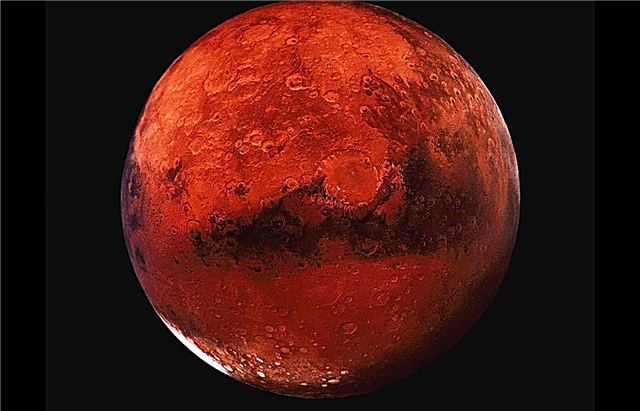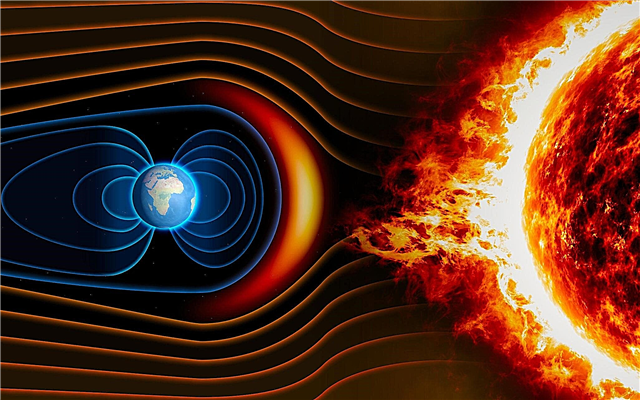
Observing people may have noticed that over the horizon the moon looks quite large. There are many theories that explain satellite size changes. By the way, a similar illusion also arises with the Sun, constellations.
Theory of apparent remoteness
This version was mentioned by Cleomed in 200 AD. It was said that the moon at the border of the sky with the earth looks larger, since it is located farther to the eyes. The human brain perceives the sky not as a hemisphere, but as a flattened dome. People see birds and clouds become smaller as they approach the horizon.

The moon is different from objects on earth. It, located near the horizon, has the same visible angular diameter as at the zenith. At the same time, the human brain compensates for distortion of perspective. Logically, the satellite should be larger.
A study conducted in 1962, revealed a curious moment. It was confirmed that visual landmarks were an important moment in creating the illusion. The moon, located near the horizon, is at the end of the sequence of buildings, landscape, plants. Therefore, the brain believes that it is most removed. As soon as landmarks are removed from the visual field, the satellite seems smaller in appearance.
There are those who refute this theory. Another experiment showed that the illusion remains even when people look at the star through a dark filter. In this case, all other objects are indistinguishable. Therefore, they do not affect the size of the satellite.
Theory of the role of eye convergence
A curious explanation of moon illusion was put forward by Boring and Suzuki in 1940 and 1990. There is an assumption that the size of the moon is directly dependent on the degree of convergence of the eye of the beholder. Consequently, the illusion appeared due to the fact that the impulses for convergence of the eyes intensified when a person looked up.

Looking at the satellite, located at the zenith, the eyes diverge. Convergence is considered the main sign of proximity to an object. Because of this, it seems to people that the moon at its zenith is much smaller in size.
Some scholars refute this theory. They believe that the lunar illusion rapidly dies away with an increase in the height of the star above the horizon. At this moment, there is still no need to change the position of the head in order to see the satellite.
Relative size theory
Scientists suggest that objects in the field of vision affect the perception of size. That is, when the satellite is near the horizon, a person sees other objects. Let's say mountains, trees, houses. Against their background, it seems that the luminary is larger than it actually is. As soon as the moon is high in the sky, no terrestrial objects are observed nearby. Because of this, it seems to a person as if the satellite is smaller than the horizon.

Psychologist Herman Ebbinghaus confirmed the theory with painted circles. He depicted an orange circle in blue small circles. Also on the sheet was a second orange circle, next to which were larger figures. At first glance it seemed that it was the circle near which there were small objects that were much larger in size.This seemed obvious to every person. In fact, both orange circles were the same size.
The same thing happens with the moon, according to scientists. In the open sky, it looks smaller than on the background of terrestrial objects. At the same time, opponents of the theory refute this conjecture. They claim that aircraft pilots also see a moon illusion. However, they do not observe earthly objects.
Other natural illusions
There are many interesting illusions in the world that every person can observe.
Mirage
It is formed when light is reflected between unequally heated and different density layers of air. Because of this, it seems as if there are objects ahead that then suddenly disappear.
Halo
It looks like a ring of fire shining around the sun. The effect is created from ice crystals.
In addition, it seems to people that the sun at the horizon is larger than at its zenith. There is currently no exact explanation for the phenomenon. Scientists put forward the same theories as in the case of the moon.
There is no exact answer to the question why the Moon looks large on the horizon and small on the head. There are several theories that explain the phenomenon. Some believe that the perception of size is influenced by objects that are in the field of view. Because of them, the satellite at the horizon looks larger. Others suggest that the magnitude of the moon changes due to convergence of the observer's eyes. Some scientists believe that the size is affected by the degree of remoteness of the satellite. The brain believes that the horizon looks more luminous.Each theory has a refutation, so we can only speculate what the illusion is connected with.












